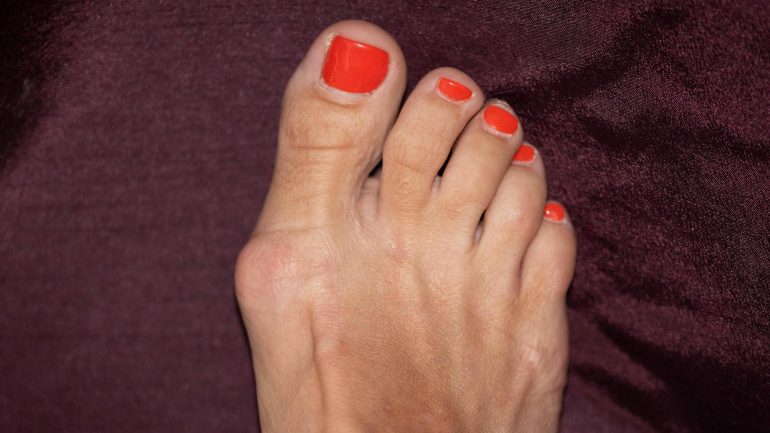In some people, the foot becomes deformed over time and a ball toe is formed, which is called hallux valgus. Especially women are affected. But the toe doesn’t always have to be operated on.
With high heels, the feet freeze in a completely unnatural way and often get crushed. So it may happen that the big toe (hallux) comes in a bent position. Doctors talk of bunions, which in technical terms are called hallux valgus.
In hallux valgus, bone tissue and soft tissue such as tendons and muscles in the metatarsus become deformed. It replaces the metatarsophalangeal joint of the big toe. “There is a bony arch on the inside of the foot below the big toe”, describes Essen’s orthopedic surgeon Ramin Nazemi. It presses uncomfortably against the shoe. If left untreated, the pain will get worse over the years.
Hallux Valgus: Possible Causes
Several factors usually play a role in the development of hallux valgus. “In 60 to 70 percent of all cases, those affected have a family-related tendency,” Nazemi explains. If there is also a tendency toward loose connective tissue — and heels — there is a potential for deformity on the feet.
Anyone who notices that a leg is changing should not wait so long to see a doctor or podiatrist. Because if left untreated, hallux valgus affects not only the feet. “The altered gait due to misalignment can lead to knee and back pain,” warns Tatjana Fersich of the Association of German Podiatrists.
Toe Separator and Muscle Training
“In the early stages of hallux valgus, training of the toe stretchers and targeted foot muscles can reduce discomfort,” says orthopedist Melanie Galla. She is the President of the Society for Foot and Ankle Surgery (GFFC). Toe separators are soft pads made of gel or silicone that are inserted between the big toe and adjacent toes. This brings the toe from the valgus to the normal position.

orthopedic insoles don’t help
Special splints attached to the feet also help to bring the big toe back to its natural position. “Orthopedic insoles do help, though hallux valgus Absolutely not,” says orthopedist Nazemi. He also relies on training the targeted leg muscles. The exercises are simple and can be rehearsed from time to time. For example, you may lie on the floor with your toes But raise the pen lying on it. Spreading your toes also helps.
operation as a last resort
Only when foot exercises along with toe spreaders, bandages and splints do not provide any relief, can patients consider surgery. In theory, the process involves repair of bones and soft tissues. “It is important that a splint shoe is worn continuously for six to eight weeks after the operation so that the corrected bone does not break,” emphasizes Nazemi.
walk barefoot regularly
Of course, it’s best if it doesn’t even reach that point. If you want to do something to prevent hallux valgus, you should walk barefoot as much as possible. Regular foot exercise also helps in keeping your feet fit. In everyday life, it is best to wear flat shoes that provide enough room for your feet. But women don’t have to do without heels, Nazmi assures. From their point of view, nothing speaks against it if they are worn for a short period of time – for example on a solemn occasion.
Important Articles: The information is in no way a substitute for professional advice or treatment by trained and accredited doctors. The contents of T-Online cannot and should not be used to independently diagnose or initiate treatment.

Web guru. Amateur thinker. Unapologetic problem solver. Zombie expert. Hipster-friendly travel geek. Social mediaholic.




